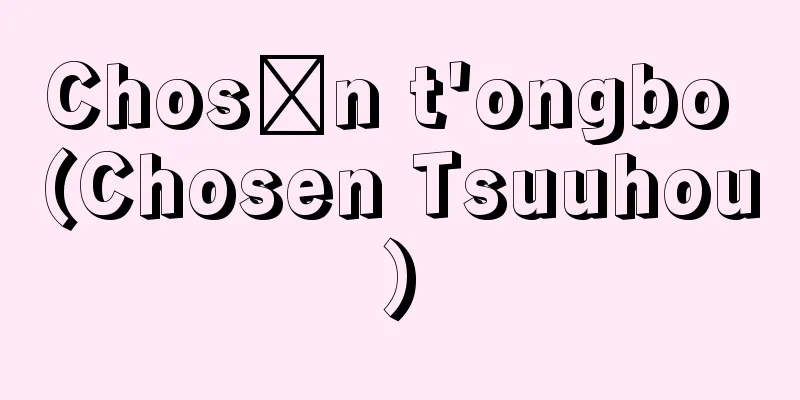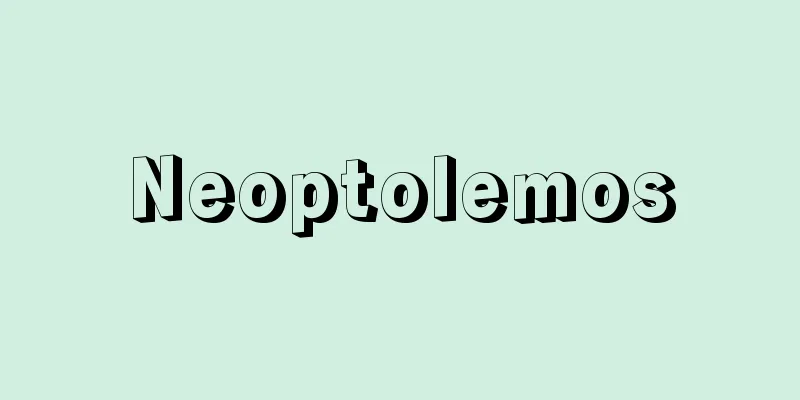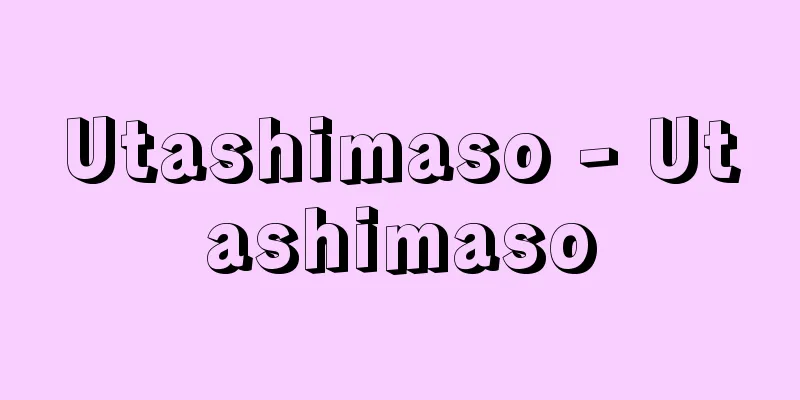Cherry Blossom Viewing

|
This is an event where people go out into the mountains and fields to enjoy eating, drinking, and playing, mainly to admire cherry blossoms. The Japanese archipelago is long from north to south and has many ups and downs, so the flowering period is not fixed, and it takes place between March 3rd and April 8th of the lunar calendar. Originally, it was not an event of personal hobby or refinement, but an event where people set up temporary hearths outdoors to eat and drink, as a taboo before the start of the agricultural season. It is also called mountain play, seaside play, March field, Hiina meal, and kamakoyaki. For example, the kamakoyaki event in Kamihei County, Iwate Prefecture, is held on March 3rd, when children form groups of about 10 people, build a hearth on the riverbank, cook food, and play all day. They also play games of destroying the hearths of other groups. In many regions, clam soup is added to the March Festival food, a remnant of the days when people caught and ate clams while playing on the seashore. As cooking outdoors became simpler, people began to pack food cooked at home in stacked boxes and take it with them. In ancient and medieval times, cherry blossom viewing was enjoyed among aristocrats and samurai, but in early modern times, feudal lords and townspeople alike took to the mountains and fields with flower-viewing bento boxes and sake cups. Artificial cherry trees were planted in temple and shrine grounds, squares, embankments and other areas near cities to create "famous cherry blossom viewing spots," and in Edo, famous spots included Gotenyama in Shinagawa, Asukayama, Mukojima, Ueno, Asakusa and Koganei. More and more famous spots were created thereafter, and cherry blossom viewing as an outing spread. Cherry blossom viewing continues to this day, but there are some groups such as companies that compete for spots, hold parties under the cherry blossoms at night, and party until late into the night. [Shoji Inoguchi] In ancient and medieval times, cherry blossom viewing was an event held by aristocrats and samurai, but in the early modern period it became an event held by feudal lords and commoners alike. It is said to have become a common practice by the early Edo period. Originally, cherry blossom viewing was not simply a leisure trip, but an outdoor communal event in which people ate and drank as a taboo before the start of spring agricultural work. "Chiyoda Ooku: Cherry Blossom Viewing," triptych by Yoshu Shuen, 1894 (Meiji 27), held at the National Diet Library . Cherry Blossom Viewing A nishiki-e depicting cherry blossom viewing at Gotenyama (present-day Shinagawa Ward, Tokyo). It was developed by order of the eighth shogun, Tokugawa Yoshimune, and along with Asukayama and other areas, it was one of Edo's most popular cherry blossom viewing spots. People came out with stacked boxes filled with food and sake cups to enjoy the cherry blossom viewing. Utagawa Hiroshige, "Edo Murasaki Meisho Genji: Gotenyama Cherry Blossom Viewing, " National Diet Library collection . Cherry Blossom Viewing at Gotenyama The rows of cherry trees along the Sumida River have long been known as a famous spot. Mukojima, Honjo Ward (now Mukojima, Sumida Ward, Tokyo). "Tokyo Landscape" (1911, Meiji 44) National Diet Library Cherry blossom trees in Mukojima (Meiji period) Source: Shogakukan Encyclopedia Nipponica About Encyclopedia Nipponica Information | Legend |
|
主として桜の花を観賞するため、野山に出て飲食し遊ぶ行事。日本列島は南北に長く、また起伏も著しいため開花時期が一定せず、旧暦の3月3日から4月8日ごろまでの間に行われる。もとは個人の趣味や風流の行事ではなく、農事の開始に先だつ物忌みのため、屋外に臨時のかまどを設けて飲食する行事であった。山遊び、磯(いそ)遊び、三月場(さんがつば)、ひいな飯、かまこ焼きなどともいう。たとえば、岩手県上閉伊(かみへい)郡のかまこ焼きは3月3日の行事で、子供たちが10人前後の組をつくり、川原にかまどを築いて煮炊きをして一日中遊ぶ。他の組のかまどを荒らす遊びもある。多くの地方で三月節供の料理に蛤(はまぐり)の吸い物を添えるのは、磯遊びで蛤をとって食べた名残(なごり)である。屋外での炊事が簡略化されると、家で料理したものを重箱に詰めて持って行くようになる。 古代・中世においては貴族・武家の間で行われたが、近世には大名も町人も、花見弁当や酒器を持って山野に繰り出した。都市近郊の社寺境内、広場、堤などには、人工的に桜を植えて「桜の名所」をつくりだし、江戸では品川御殿山(ごてんやま)、飛鳥(あすか)山、向島(むこうじま)、上野、浅草、小金井(こがねい)などが著名であった。その後も次々に名所ができ、行楽の花見は広がった。現代も花見の行楽は続いているが、一部には、会社などの団体で争って場所をとり、夜桜の下で宴会を開き、夜遅くまで騒ぐ人たちもいる。 [井之口章次] 古代・中世において、花見は貴族・武家の行事であったが、近世には大名や庶民の間でも行われるようになった。江戸時代前期には一般に定着したといわれる。花見は元来、単なる遊山を目的としたものではなく、春の農事の開始に先だつ物忌みのため、屋外で共同飲食する行事であった。楊洲周延画『千代田大奥 御花見』 三枚続 1894年(明治27)国立国会図書館所蔵"> 花見 御殿山(現東京都品川区)の花見を描いた錦絵。8代将軍徳川吉宗の命によって整備され、飛鳥山などとともに江戸有数のサクラの名所としてにぎわった。人々は料理を詰めた重箱や酒器を持って繰り出し、花見を楽しんだ。歌川広重画『江戸むらさき名所源氏 御殿山花見』国立国会図書館所蔵"> 御殿山花見の図 隅田川沿いの桜並木は、古くから名所として知られていた。本所区向島(現在の東京都墨田区向島)。『東京風景』(1911年〈明治44〉)国立国会図書館所蔵"> 向島の桜並木(明治時代) 出典 小学館 日本大百科全書(ニッポニカ)日本大百科全書(ニッポニカ)について 情報 | 凡例 |
<<: Hanamyoga (flower ginger) - Hanamyoga (English spelling) Alpinia japonica
>>: Panama hat - Panamabou (English spelling)
Recommend
"Osaka Heimin Shimbun" - Osaka Heimin Shimbun
...However, due to the conflict between the direc...
Spilite (English spelling)
It is an altered basic rock, generally exhibiting ...
Skidmore, L.
...known for designing large commercial buildings...
Pontois, N. (English spelling) PontoisN
…First came to Japan in 1963. Noëlla Pontois (194...
Erfindung
…From this, in Japan, it came to mean a remarkabl...
Gamma alum - gamma alum
…On the other hand, when the ionic radius of M I ...
Hino Arinori
1302‐63 (Kengen 1‐Shohei 18/Sadaharu 2) An aristoc...
Evolution equation
If there is a physical phenomenon in which the sta...
Pure literature - junbungaku
A literary term. It refers to novels written with...
Ishii Hakutei
Born: March 28, 1882 in Tokyo [Died] December 29, ...
apophatikē theologia (English spelling) apophatiketheologia
…The knowledge of God must be the knowledge of ig...
Mrs. Stowe - Harriet Beecher Stowe
1811‐96 American author. Born in Connecticut as th...
Kujūla Kadphisēs (English spelling)
Founder of the Kushan dynasty. In the Book of the ...
positive
...Generally, it refers to an argument that avoid...
Cased House - Cased House
...The third form of visiting deities is not one ...









